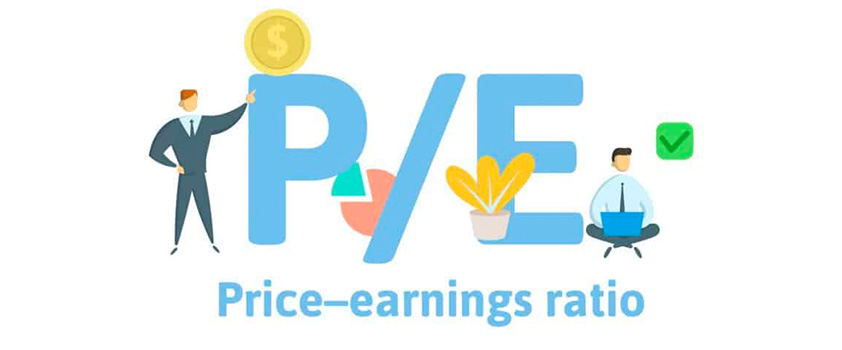Understanding financial metrics is fundamental for investors who seek to make informed decisions in the stock market. One of the most popular ratios utilised is the P/E ratio. The P/E ratio serves as a barometer for evaluating a company’s valuation and making comparisons across different stocks within an industry or the market at large.
The P/E Ratio: A Closer Look
The P/E ratio is calculated by dividing the current market price of a stock by its earnings per share (EPS). For example, if a company’s stock is priced at INR 500 and the EPS for the last 12 months is INR 50, the P/E ratio would be 10.
Formula:
P/E Ratio = Market Price per Share ÷ Earnings per Share (EPS)
P/E Ratio = 500 ÷ 50 = 10
A higher P/E ratio might suggest that the market expects future growth and is willing to pay a premium for the earnings today. Conversely, a lower P/E ratio could indicate that the stock is undervalued or that expectations for future growth are low. However, these interpretations should be made with the business’s context and sector-specific dynamics in mind.
Contextual Analysis of the P/E Ratio
Investors analyse the P/E ratio against historical performance and industry benchmarks. For instance, a technology company might have a higher P/E ratio than a traditional manufacturing firm because the tech sector often has higher growth expectations. Trends in the Indian market could influence these expectations significantly.
Moreover, comparing P/E ratios only within the same sector can avoid misleading conclusions that might arise from varying industry capital structures and growth rates. For example, comparing a fast-moving consumer goods (FMCG) company with a software service provider might not yield actionable insights because of differing market dynamics and growth expectations.
P/E Ratio and Investment Strategy
The P/E ratio serves as a critical component in forming investment strategies. Growth investors may prefer high P/E stocks, banking on expected future earnings growth. Conversely, value investors might seek lower P/E stocks, positing that these companies are undervalued relative to their intrinsic worth.
Additionally, the P/E ratio should be considered alongside other financial metrics like the debt equity ratio formula. This ratio provides insights about a company’s financial leverage and risk level, which are crucial in making sound investment choices.
Debt-to-Equity Ratio and Its Relevance
The debt equity ratio formula measures the proportion of debt and equity financing a company uses to fund its operations. It is calculated by dividing total liabilities by shareholders’ equity.
Debt-to-Equity Ratio Formula:
Debt-to-Equity Ratio = Total Liabilities ÷ Shareholders’ Equity
A lower debt equity ratio typically suggests a company is using less debt relative to equity, which may indicate lower risk. For instance, if a company has INR 200 crore in liabilities and INR 400 crore in equity, the debt equity ratio would be:
Debt-to-Equity Ratio = 200 crore ÷ 400 crore = 0.5
When evaluating a company, considering the debt equity formula alongside the P/E ratio can provide a clearer view of both growth potential and financial health. A company with a high P/E but an unsustainable debt equity ratio might not be a promising investment despite strong growth prospects.
Practical Applications of P/E and D/E Ratios in Investment Decisions
Sector Comparison
Use the P/E ratio to compare companies within the same industry. A comparison should be comprehensive, including a look at other financial metrics such as the debt equity ratio to gauge risk.
Historical Context
Investigate how a company’s P/E ratio has trended over time and compare this with historical market averages to determine if the current valuation is justified.
Economic Conditions
Consider the broader economic landscape, including interest rates and inflation, which can influence both earnings and stock prices, thereby impacting the P/E ratio.
Growth Vs. Value
Align investment strategies with financial metrics. A growth strategy may focus on high P/E ratios, while a value approach targets lower P/E ratios, considering the company’s earnings potential.
Financial Health
Use the debt equity formula in conjunction with the P/E ratio to assess not only profitability but also financial stability, which is pivotal for long-term investment returns.
Calculating P/E and D/E Ratios: An Example
Consider a fictional company, “XYZ Ltd.,” with the following financials:
- Stock Price: INR 1,200
- EPS: INR 100
- Total Liabilities: INR 300 crore
- Shareholder’s Equity: INR 600 crore
P/E Ratio Calculation: P/E Ratio = 1200 ÷ 100 = 12
Debt-to-Equity Ratio Calculation: Debt-to-Equity Ratio = 300 crore ÷ 600 crore = 0.5
Through these calculations, investors can gauge that XYZ Ltd. is worth INR 12 for every rupee of its current earnings, while maintaining a moderate debt level compared to its equity.
Disclaimer
While the P/E ratio and other financial metrics provide valuable insights, investors must gauge all pros and cons of trading in the Indian stock market. Market trends, industry dynamics, and specific company circumstances can all significantly impact investment outcomes. Always conduct thorough research or consult a financial advisor before making investment decisions.
Conclusion
The P/E ratio, when used effectively, offers a lens into a company’s valuation through its earnings. Coupled with other financial measures like the debt equity ratio formula, it forms a comprehensive toolkit for evaluating potential stock investments. While these metrics provide insights, understanding the broader economic context and an individual company’s market position remains essential for informed investment decisions.






